Taking cow feeding to the next level
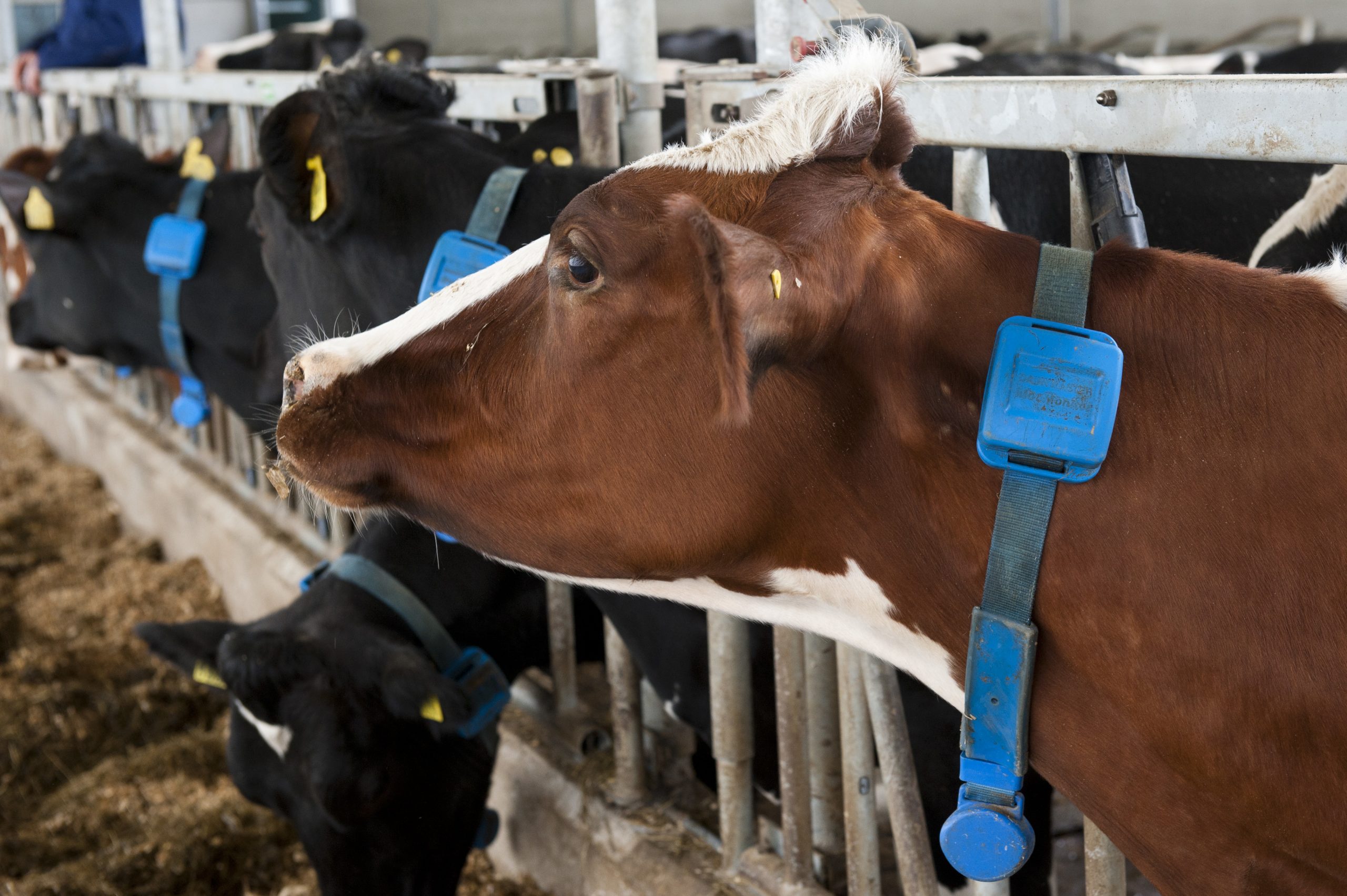
The use of data and precision feeding was one of the focus topics at a recently held ruminant seminar, organised by the French CCPA Group.
Various speakers shed their light on new developments and insights for dairy cow nutrition. Mariska van der Voort, researcher at Wageningen University in the Netherlands updated the audience on the use of sensor systems in herd management. She gave two examples of sensor technologies:
- automated oestrus detection
- and a sensor to predict the moment of calving
“Automatic oestrus detection is proven successful for several reasons. The sensor can be attached to the leg, collar or to the ear and the technology is often associated with farm software modules, helping the farmer to adjust management when needed. In addition, the return on investment is good and the farmer can profit by € 2.827 more income per cow/ per year”, explained Ms van der Voort. She then went on to say that the potential of sensors in general is not always reached. Ms van der Voort: “The most important limiting factor for commercialisation is that sensors have an unfavourable/unknown cost-benefit ratio. But there’s great untapped potential to using sensors to improve feed efficiency, animal health and welfare and product quality”. She also sees opportunities for sensors to predict the moment of calving and increased use of data, coming from automated milking systems to step up breeding, behaviour/health and feed efficiency.
Sensors and new feed formulation
Muriel Johan, ruminant specialist at CCPA Group delved deeper into digital innovation and the initiatives of CCPA Group regarding this topic. “Digital transformation in agriculture is a reality and around 67% of farmers use at least one tool, such as an automatic concentrate distributor or oestrus or calving detection. On top of that, 39% of them plan to invest in these data connecting tools, such as monitoring cameras, heat detectors and automated milking systems”, explained Ms Johan. She further explained that CCPA is actively focusing on sharing data to encourage innovation. “At CCPA we use existing databases (climate and weather data) or use data, coming from the herd in real time (e.g. feed consumption, environment, milk counters, welfare and behaviour of animals, all recorded via sensors). Last but not least, we also test the ‘new’ sensors of the future on our own reference farms”.
Fabrice Robert, R&D department manager at CCPA Group explained the developments in diet formulation and talked about ‘nutrition 2.0’. In other words, new ways to formulate feeds, above and beyond metabolic needs. “Nutrition 2.0 is based on the pharmacological effects of nutrients and their impact on immunity, reproduction. To apply this in practice we need new experimental tools, such as in vitro models (cells, explants) or biomarkers of inflammation or oxidative stress. And this was also the reason to create Feedscreen, a joint laboratory of INRA and Deltavit (the lab belonging to CCPA Group). With this lab we can identify new compounds with beneficial effects on animal health”, explained Mr Robert. Over the last 3 years, the lab has been looking at how the intestinal mucosa responds to different ingredients. Also in vitro tests are being performed to study the anti-inflammatory effects of ingredients on macrophages, the first sentinels of the immune system.
Preventing inflammation
Mr Robert also addressed the effects of inflammation on growing animals, which can lead to a suppression of growth between 10 to 15%. “The digestive tract is the organ most sensitive to inflammation. This is why it is so important to prevent the onset of it”, concluded Mr Robert. Barry Bradford, Professor from Kansas State University also spoke about this topic and said: “The number of infections increase in the first 2 weeks after calving, with a greater incidence in the third lactation compared to the first lactation. We see that 60% of the diseases are the result of an infection and 40% of diseases is the result of metabolic misbalance”, Mr Bradford explained. The transition period from calving to lactation can be improved by using nutritional tools with anti-inflammatory potential, such as yeast, omega-3 fatty acids or plants containing polyphenol. The CCPA group for example launched a supplement, containing the plant Scutellaria baicalensis. This main ingredient consists of 4 main flavonoids that support dairy production while contributing to udder health.

Improving protein efficiency
The improvement of protein efficiency was the topic of the Didier Andrieu and Cédric Faure, both ruminant specialists at CCPA. If you want to improve protein efficiency, you first need to know what protein efficiency is. Mr Andrieu: “The gross efficiency of the protein is the ratio between the dairy proteins produced and the ingested raw proteins. Our goal is to improve the transformation of proteins into milk or meat”. This process comes with many challenges; social (competition with human food), environmental (reduction of nitrogen releases), nutritional (positive relationship between protein and energy efficiency), and economical (evolution of the soy proteins prices). “So why should we focus on the metabolism of nitrogen in the rumen”, said Mr Andrieu. “This is because 40-98 % of the protein needs of the dairy cows is covered by microbial proteins (1,600-1,900 gr of microbial proteins are synthesised per day). In addition, there is a relation between microbial proteins and milk production and the microbial proteins are a source of amino acids. We should also focus on a better understanding of the advantages and the limits of the use of non-proteic nitrogen sources (such as urea, ammonium sulphate”. Mr Andrieu also asked the audience about what the share of non-degradable nitrogen and non proteic nitrogen should be in the cow’s diet. “The diversity of nitrogen sources with different kinetics of degradation and the use of non-protein nitrogen help to optimise protein efficiency. At the same time, there are many factors of variation of the proteolitic activity, such as rumen pH, ingestion level, forage/concentrate ratio, type of proteins and technologic treatment applied. Hence, Cédric Faure presented the ONE concept: Objective Nitrogen Efficiency, which takes into account the kinetics of degradation of nitrogen in the rumen in order to better feed the flora of the rumen to optimise its growth, and finally choose the most suited nitrogen corrector to the diet. The ONE concept is a change in diet formulation (linked to the feed software developed by CCPA), with more focus on performance (energy and protein needs) and the need for ruminal proteins, non proteic nitrogen and quick and slow proteins, The model works with both nutrient references and field data. For energy, the concept takes into account the nature of energy (starch, sugars, fats, cellulosic fractions) and its kinetic of degradation. “A good rumen efficiency means digestive efficiency with an efficient synergy between energy and proteins”, concluded Mr Faure.
The Ruminant Seminar was organised by the French CCPA Group and took place in Paris, France June 1-2, 2017.
Join 26,000+ subscribers
Subscribe to our newsletter to stay updated about all the need-to-know content in the feed sector, three times a week. Beheer
Beheer

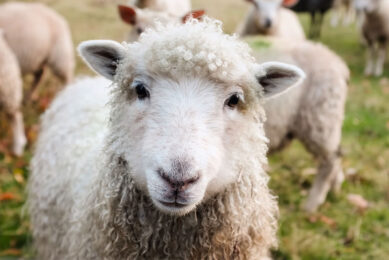
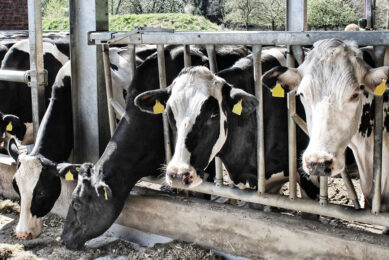
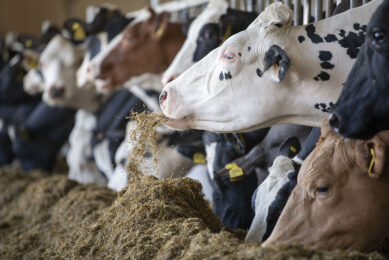
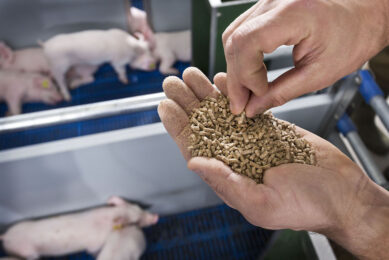




 WP Admin
WP Admin  Bewerk bericht
Bewerk bericht